Fire Emblem: The Blazing Blade may be the seventh game in the Fire Emblem franchise, but it was the first to make it to the West in 2003; the game was just called Fire Emblem for that release. It was an introduction to the series for many players, such as myself, who wouldn’t have a chance to play any previous entries until remakes started releasing half a decade later.
Fortunately, the developers considered that they would be reaching a new audience and provided the series’ first full-length tutorial in Fire Emblem: The Blazing Blade. When you start a new game for the first time, you are treated to a ten-chapter mini-story designed to introduce the world and the game’s core mechanics.
The tutorial follows fan-favorite Lyn, a member of a nomadic tribe who learns she has noble blood and a living relative in the Caelin territory. During her story, players learn all about the core mechanics of the game, including the rock-paper-scissors style weapon triangle, how to recruit characters, and how each unit type works. The story also introduces characters and plot elements relevant to the game’s main story. Lyn’s story is nonessential (which is why you can skip it in subsequent playthroughs), but the writers did a good job tying a story together in only ten chapters. It’s a joy to grow with Lyn as she goes from a lone girl on the plains to the leader of a small militia in search of her last living family member.
For new players, Lyn’s story makes Fire Emblem: The Blazing Blade the most approachable game in the series up to this point, as there are very few mechanics that you need to figure out on your own. Lyn’s mode’s gameplay can appear dull for series veterans,, and there’s no skipping it on your first playthrough. Many veterans will enjoy Lyn’s early story, though, which includes a few of my favorite characters in the game.
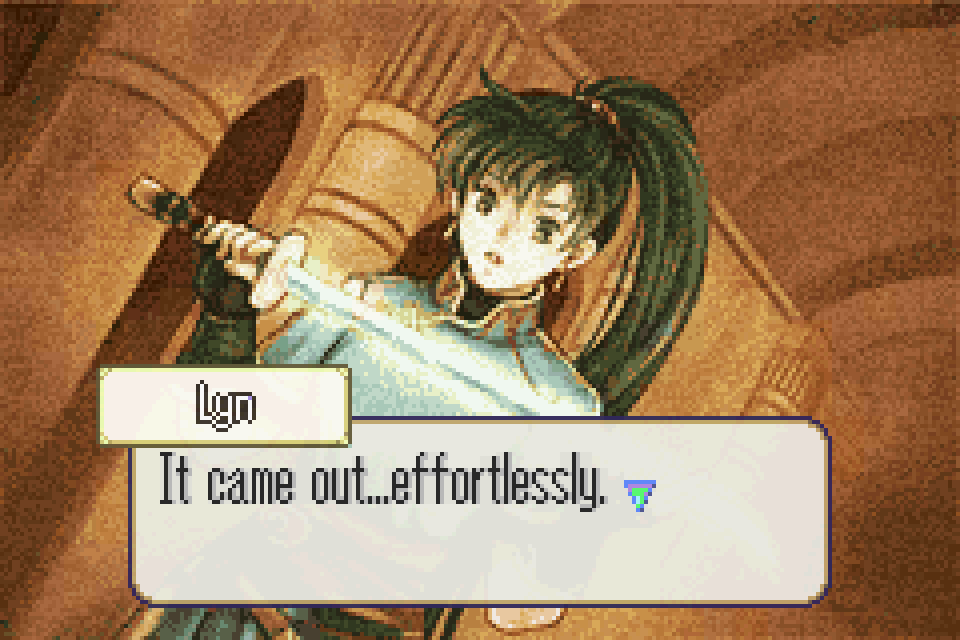
After Lyn’s story is the meat of the game, a longer tale with more complex and challenging maps. This story follows Eliwood, a young lord who leaves his territory to search for his missing father. Before long, Eliwood and his knights are joined by Hector, the game’s third main character and another young noble. While the pair are initially searching for Eliwood’s father, they quickly get wrapped up in a villainous plot involving dragons, an international cabal of assassins, and a powerful dark spellcaster exerting their will on the world of Elibe.
Completing Eliwood’s story unlocks Hector’s story. This story covers nearly the same events but puts more of a focus on Hector. Hector’s story includes several new maps, a few new characters, and more challenging versions of Eliwood mode maps. To experience everything the game has to offer, you need to beat the game at least three times. While each playthrough will offer some new experiences, most of the maps are very similar, so it becomes a slog by the time you finally take a crack at the hard mode of Hector’s story.
Regardless of your route, villains crop up left and right during your efforts to find Eliwood’s father. To deal with the rogue’s gallery, Eliwood and Hector recruit a veritable army of delightful characters throughout the game. Every character from Lyn’s story returns at some point (maintaining any level-ups they got during her story), as well as new characters to help fill out your ranks.
The high volume of units in Fire Emblem: The Blazing Blade allows players to experiment with their armies and provides a cushion for unit deaths. I reset a chapter whenever a unit dies, but Fire Emblem: The Blazing Blade is approachable for players that want to embrace permadeath. Few units are essential, and the late-game additions to your army provide the tools you need to finish the game, even if you lost many soldiers along the way.
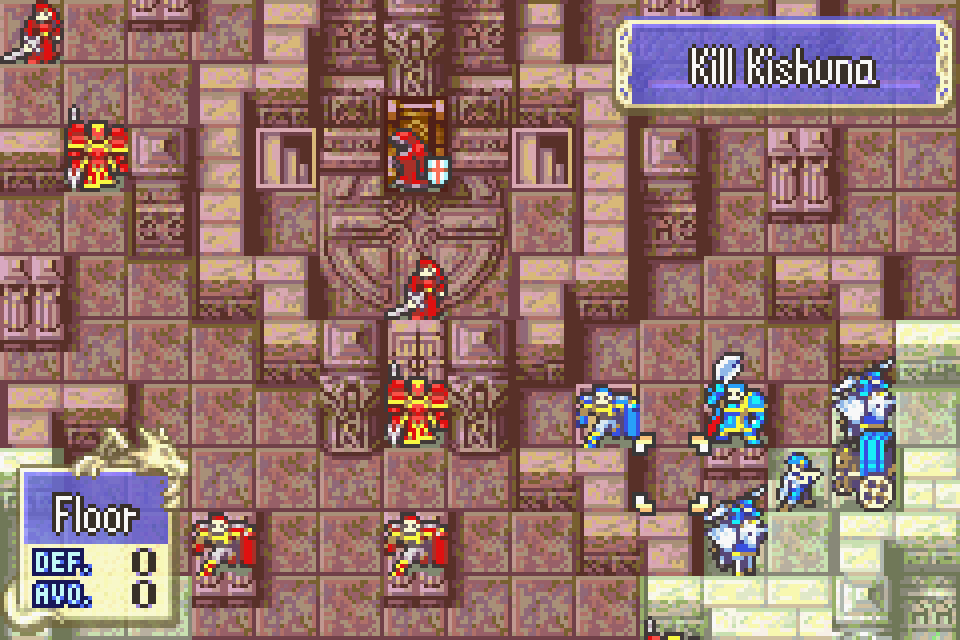
Despite a large supply of soldiers, there’s still an incentive to protect your units and raise them over the long term in Fire Emblem: The Blazing Blade. While many late-game recruits are strong ways to bolster your army, you still have to fill out your remaining deployment slots with units you’ve trained. Plus, leveling one of the more robust early-game units provides a better long-term return than relying on later army additions in some cases.
Early-game units do take investment, and your resources are limited, as stat boosters are sparse and most early-game units require special items to promote to stronger classes. The strongest armies will have a balance of higher investment early-game units and pre-promoted units that are ready to contribute as soon as you recruit them.
Of course, my team was dictated (at least in part) by which characters I liked the most. The support system thrives in Fire Emblem: The Blazing Blade, allowing units to share bonding conversations if they spend enough time with each other on the battlefield. This is the main way players get to know characters that aren’t integral to the main plot. The support system made it easy for me to get attached to some of my favorite characters, like the studious mage Erk or the retired assassin Legault. Without the support system, it wouldn’t be possible to characterize 40+ characters in only 33 chapters.
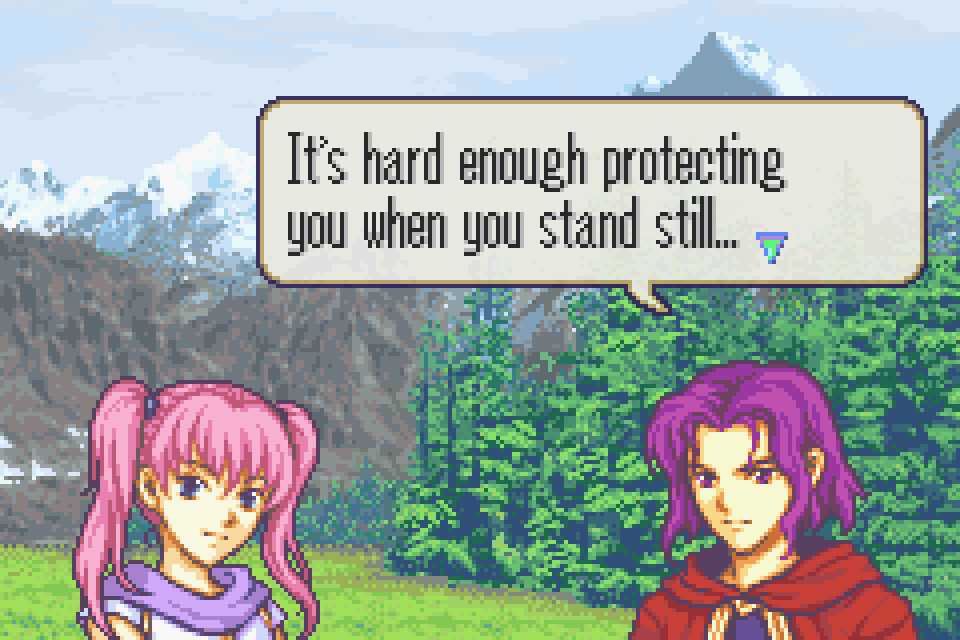
The only black mark on Fire Emblem: The Blazing Blade’s support system is how long it takes to unlock support conversations. Characters often have to spend 30+ turns next to each other just to unlock their first support conversation. This may not sound like a lot, but getting all three support conversations for a pair of characters can take hundreds of turns, which is difficult to achieve in normal gameplay for units that aren’t in your army from the start. Still, for those interested in unlocking many support conversations, it is easy, albeit tedious, to spend extra time on maps grinding support points.
While the characters in Fire Emblem: The Blazing Blade are some of my favorites in the series due to the support system, the story’s writing doesn’t hold up well under scrutiny at times. There are a number of plot holes and contrivances (some due to translation errors), which can make it difficult to really invest in the game’s villains, who can come off as bumbling instead of cool and calculating. Still, the story manages to include some very memorable moments and set pieces and is serviceable enough that it is carried by the game’s lovable cast.
Fire Emblem: The Blazing Blade also struggles with unit balance. Many characters are very weak, and others rarely have an opportunity to succeed in their niche. For example, defensive knights and generals seem strong on paper, but outside of the early game, there aren’t many times when you need to choke a point and another unit can’t do the job. As a result, high movement classes like paladins, pegasus knights, and wyvern knights dominate most of the game’s maps, while weaker units and classes ride the bench.
The game is still fun despite the iffy unit balance, but it can be frustrating for new players. New players don’t have the critical information to know which units are good and which ones struggle. As a result, it’s easy to construct an army that makes a playthrough much more challenging and frustrating than it needs to be. Notably, the game is easy enough for any unit to work, especially at lower difficulties, so this is more of a problem at the highest difficulties or for players interested in optimization.
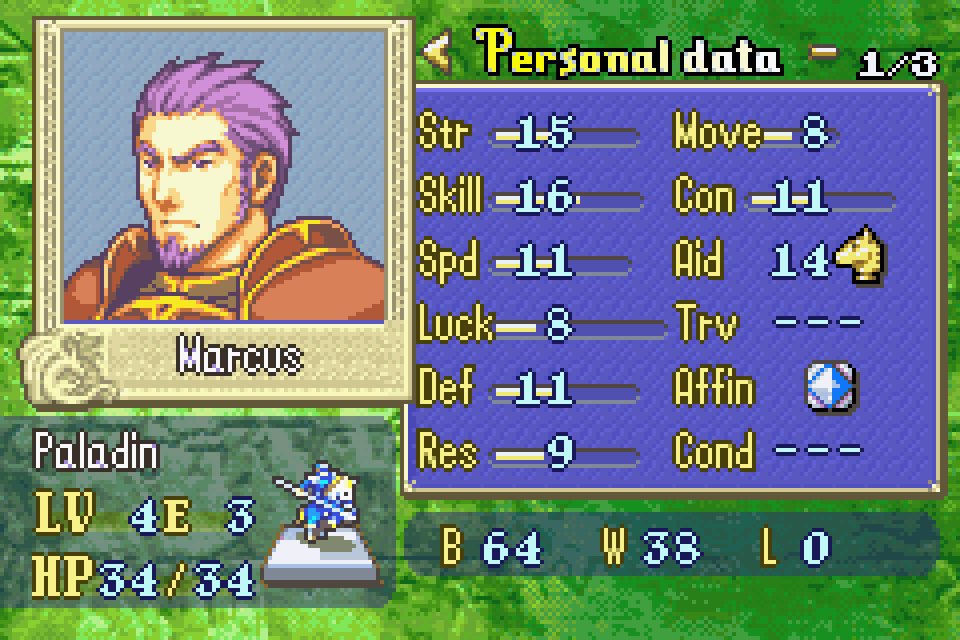
The issues with unit designs are compounded by Fire Emblem: The Blazing Blade’s maps. Many contain time-sensitive side objectives that are strategically interesting but again push you towards using high mobility classes. When you need to get to a village before it’s destroyed or reach a potential recruit before they die, you call on your horses and pegasi, leaving your slower units on the bench. Most of your archers and many combat units without a mount never have a chance to shine.
While the maps do encourage limited army compositions, they are still interesting and fun to play. Side objectives discourage players from turtling up and instead demand that you move quickly and take more risks if you want to get every recruit and reward each map has to offer. The map design is a huge part of why Fire Emblem: The Blazing Blade has my favorite gameplay of GBA-era Fire Emblem.
There are a number of hidden side chapters in Fire Emblem: The Blazing Blade, as well as a pair of short route splits based on hidden requirements. Getting all the side chapters isn’t integral to the story, but for players aiming to see all the game has to offer, it’s worth cracking open a guide to check their requirements. There are a few requirements that are very unlikely to reach in normal play, and it would be easy to miss them without even realizing it. Unlike the previous game, these chapters aren’t necessary to get the true ending, so this game plays perfectly well without a guide if you aren’t a completionist.
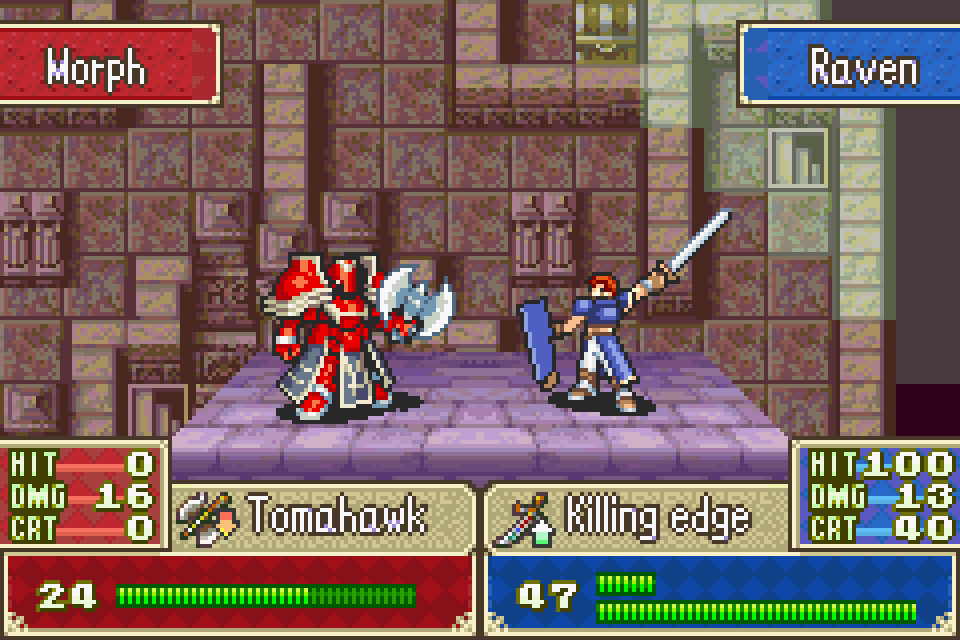
Fire Emblem: The Blazing Blade keeps the same art style as its predecessor. Each character has a beautiful pixel art portrait, and the over-the-top combat animations from the previous game return, along with some new animations for the game’s three lords. The soundtrack is also excellent and really pushes the GBA’s limited sound system to its limits. In particular, the recruitment theme in Fire Emblem: The Blazing Blade remains my favorite in the series.
Fire Emblem: The Blazing Blade doesn’t make many gameplay or presentation changes from its predecessor, but that’s not a bad thing. New maps and characters prevent the gameplay from getting stale and the presentation is as beautiful as ever. Between the fun maps, interesting characters, and lengthy tutorial, Fire Emblem: The Blazing Blade is one of the best jumping-on points for the series, and a must-play for fans of the franchise.


